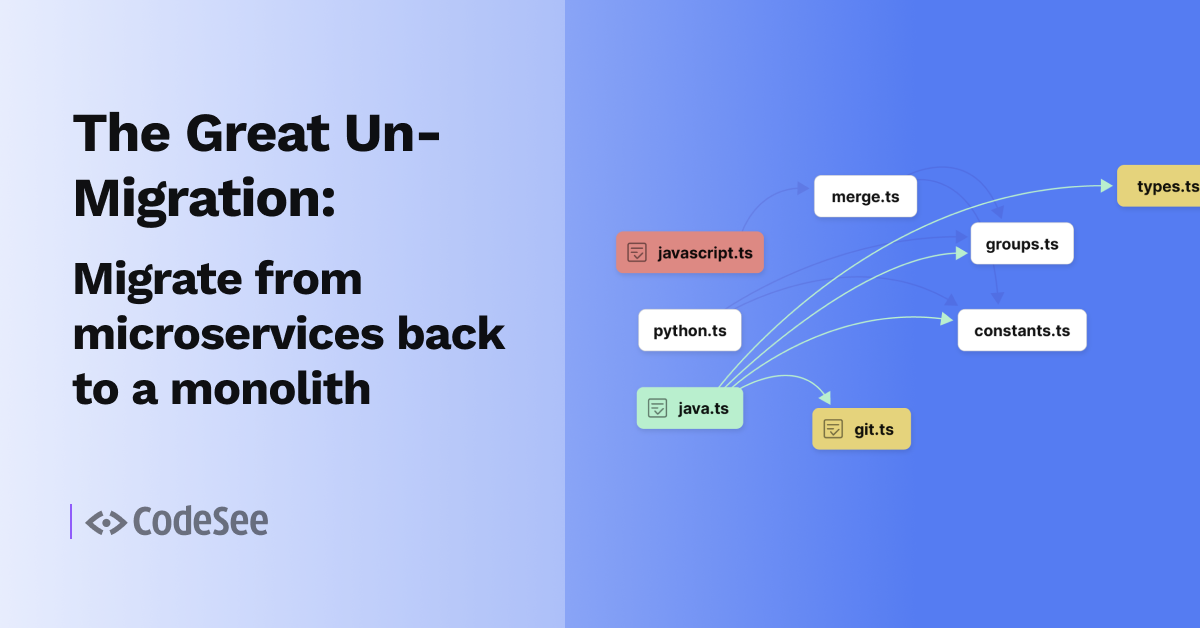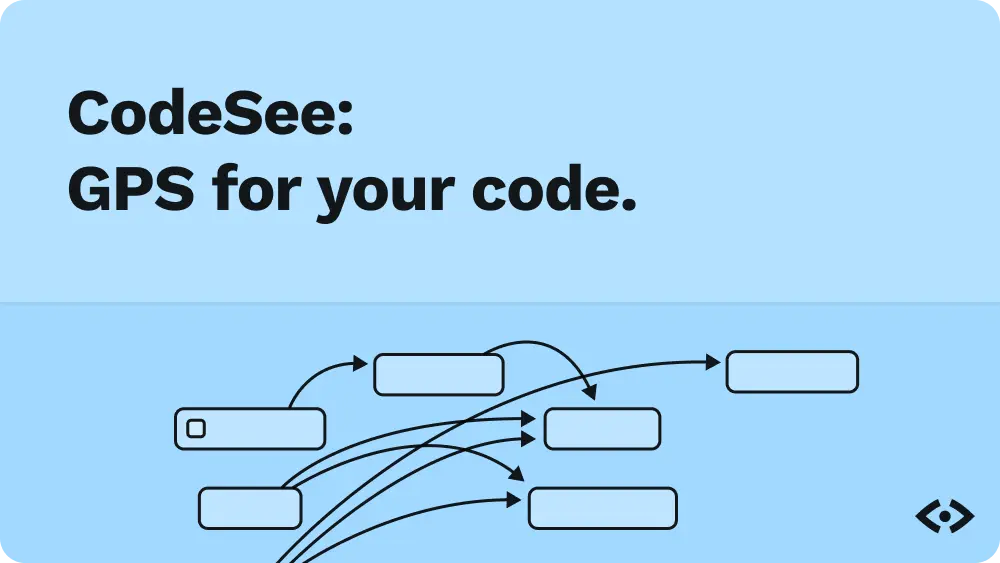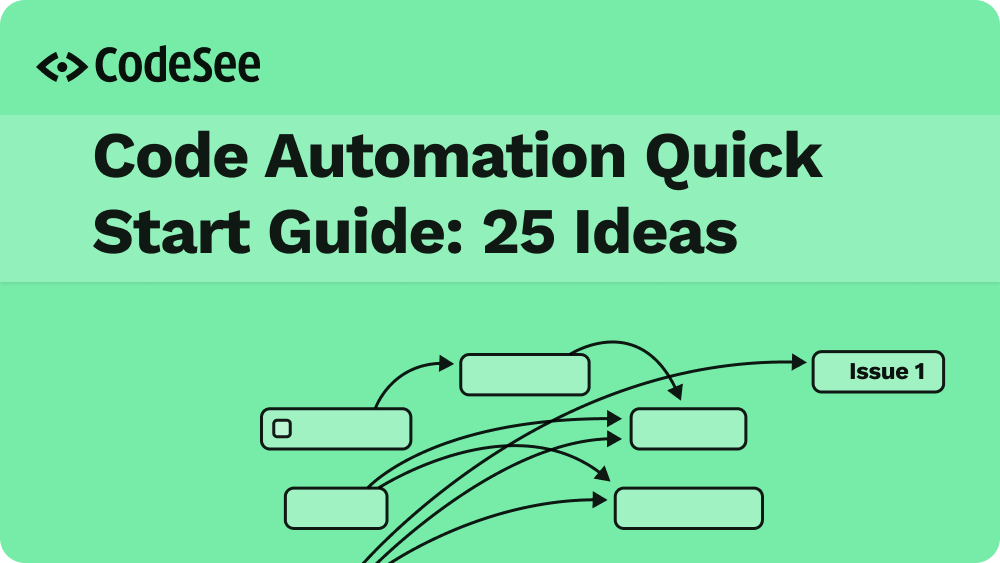In recent years, the IT world has been buzzing about microservices, with many organizations hopping on the bandwagon to reap the benefits. However, some teams are now making a surprising reversal, venturing back to the monolithic architecture they once left behind.
In this blog post, we'll explore:
- reasons behind this shift,
- how to determine whether you need a monolith or simply need to fix issues within a distributed monolith,
- some clever strategies for recomposing the monolith, and
- how to use dev tooling and platform thinking to migrate away from microservices.
7 Reasons Why Teams Are Returning to Monolithic Architecture
Microservices promised a world of possibilities, like scalability, quick development, and ease of deployability and maintenance. However, teams soon discovered that the journey to microservices was not all sunshine and rainbows. They encountered challenges like organizational changes, an increase in complexity, and the need for better observability and continuous integration/continuous deployment (CI/CD).
Teams are choosing to return to monolithic architecture for a variety of reasons.
Reason 1: Versioning Woes.
While microservices can be quick to deploy, versioning becomes a thorny issue. Microservices offer the advantage of rapid deployment, but they come with their own set of challenges when it comes to versioning. With multiple services deployed independently, managing version compatibility can become a complex task. In contrast, monolithic systems experience brief periods of version mismatch, but the deployment process ensures that all components are eventually in sync.
Reason 2: Team Size Mismatch.
Smaller engineering teams might struggle to maintain microservices, and blindly following big tech practices isn't always a good fit. Microservices are often praised for their scalability and ability to accommodate large teams, but they may not always be the right fit for every organization. Small engineering teams may lack the resources or expertise needed to maintain a complex microservices ecosystem. In such cases, a monolithic architecture may be more appropriate and manageable.
Reason 3: Unnecessary per-service scalability.
Not every organization needs to scale each service independently. Microservices promise scalability on a per-service basis, allowing organizations to allocate resources more efficiently. However, not all organizations need this level of granularity in their scaling efforts. For some, the added complexity of managing multiple services may outweigh the benefits of selective scalability.
Reason 4: Conway's Law.
Organizational structure can sometimes hinder the benefits of microservices. Conway's Law states that the design of a system mirrors the structure of the organization responsible for creating it. While microservices can offer better separation between teams, this advantage may not always materialize due to changes in team structures, departmental reorganizations or the inherent culture of the company as a whole. In such situations, a monolithic architecture may provide more stability and predictability.
Reason 5: Local Testing Difficulties.
Running and testing a distributed system locally can be challenging and time-consuming. Microservices introduce complexities in terms of service dependencies and communication, making it harder to set up and maintain local development environments. Monolithic systems, on the other hand, offer a more straightforward approach to testing and debugging.
Reason 6: Cost Savings.
Some teams are exiting the cloud to save costs, moving away from cloud-based infrastructure in favor of on-premises solutions. In such cases, a monolithic architecture may be more suitable, as it generally requires less overhead in terms of management and orchestration.
Reason 7: Simplicity.
Debugging and testing can be more straightforward in a monolithic system, as all components are part of a single, unified codebase. This makes it easier to trace issues and identify dependencies, reducing the time spent on troubleshooting and bug fixes.
Deciphering the Monolith Puzzle
Choosing the right architecture for your organization is all about balance. You can maintain separation of concerns and scale different APIs using a monolithic architecture while still enjoying some benefits of microservices.
To decide whether you need to move back to a monolithic architecture or fix issues in a distributed monolith, consider the trade-offs and timeframe. Analyze the pain and productivity loss from microservices over time and weigh it against the cost of migrating to a monolith. Also, take into account factors like team size, expertise, and organizational structure.
Before you set sail towards a monolith, consider the following:
- Assess if a monolith is genuinely the best fit for your team size, structure, skillset, and operational ability.
- Make sure the migration aligns with business objectives and provides value.
- Don't underestimate the time and resources required for the migration; it may take longer than you think.
Strategies for Recomposing the Monolith
Strategy 1: Embrace a message bus.
Implementing a message bus, such as Kafka, can serve as a powerful layer of indirection during the transition. This approach allows you to gradually merge microservices back into the monolith without causing any disruptions to the existing system. The message bus ensures that communication between different components remains seamless, enabling you to decompose and recombine services as needed.
Strategy 2: Unify data storage.
One of the critical aspects of recomposing a monolith is handling data storage. You have two primary options:
- Move the data into a single database: Consolidating data from multiple microservices into a single database can simplify the system and reduce complexity. This approach can also lead to cost savings and improved performance.
- Keep the data separate: In some cases, it might be more practical to maintain separate databases for each service. This approach can help preserve the autonomy and isolation of individual components while still moving towards a more monolithic structure.
Strategy 3: Implement feature flags.
Feature flags can be instrumental in managing the transition to a monolithic architecture. By using a feature flag management platform like LaunchDarkly, you can gradually introduce changes in the system and toggle features on and off as needed. This approach allows you to test and validate new functionalities while minimizing the risk of unintended consequences.
Strategy 4: Test both paths.
As you merge microservices into the monolith, verify that the new system behaves as expected. By testing both the microservices and monolithic paths, you can identify discrepancies and iron out any differences. This process ensures that the new monolithic architecture functions correctly and meets all requirements.
Strategy 5: Leverage modular design principles.
Even when transitioning back to a monolithic architecture, it's essential to maintain a modular design. By organizing your codebase into distinct modules with clear boundaries, you can preserve the benefits of separation of concerns and maintainability that microservices offer. This approach can help you achieve the best of both worlds: the simplicity and ease of a monolith, coupled with the flexibility and modularity of microservices.

Dev Tooling and Platform Thinking: Your Trusty Companions for Recomposing the Monolith
When recomposing the monolith, dev tooling and platform thinking can be your trusty guides, helping you navigate traces, flows, and dependencies. Software mapping and visualizing boundaries connected to the code can provide the context you need. When it comes to migrating from microservices back to a monolith architecture, having the right dev tools and platform thinking in place can make all the difference.
One powerful tool that can assist in this process is CodeSee's Service Maps, which provides a visual representation of your system's architecture and dependencies. In this section, we explore how CodeSee Service Maps simplify and streamline the migration process from microservices to a monolith.
Visualizing system architecture.
CodeSee Service Maps offer an intuitive way to visualize your system's architecture, making it easier to understand the relationships between services, databases, execution flow and more. This bird's-eye view can help you identify areas where consolidation is possible and determine the best approach for merging microservices back into a monolith.
Service Map flows give you a complete understanding of how data flows through your services including all of the variations giving you a holistic deep understanding of how your system works.
Identifying dependencies.
CodeSee Service Maps allows you to view dependencies between services and components in real-time, giving you a clearer understanding of how your system is interconnected. This knowledge can help you anticipate and address potential issues during the migration process, such as circular dependencies or tightly-coupled services.
Assessing the impact of changes.
As you plan your migration, you may need to make adjustments to your system's architecture or service boundaries. CodeSee Service Maps can help you visualize the impact of these changes, enabling you to make more informed decisions and minimize potential risks.
Tracking the progress of migration.
With CodeSee Service Maps, you can monitor the progress of your migration in real-time. This visibility allows you to quickly identify any issues that may arise during the transition, making it easier to address problems and ensure a successful migration.
Simplifying communication and collaboration.
When migrating from microservices to a monolith, clear communication and collaboration across your team are essential. CodeSee Service Maps provides your team with intelligent automatic updates when critical problems happen across your system.
Maintaining system documentation.
As you transition from microservices to a monolith, it's crucial to keep your system documentation up to date. No developer wants the added work of manually creating system diagrams at all. CodeSee Service Maps auto update themselves, providing an accurate always up-to-date representation of your system's architecture and dependencies. This documentation can help team members get and stay up to speed more quickly and ensure that everyone on the team has a consistent understanding of the system so they can always ship more code faster.
Conclusion
So, to wrap up this wild ride of an article, some brave teams are going against the tide and saying "au revoir" to microservices, and "hello again" to the monolithic architecture they once bid farewell.
Why? Well, it's a bit like choosing between pizza and burgers–it depends on your taste and what you're craving at the moment and what’s available to you culturally at your company. Sometimes, the grass isn't always greener on the other side, and teams are finding that an “old-fashioned” monolith might just be the perfect fit for their needs (and their wallets).
To make this journey back to a monolith, teams can rely on trusty tools like CodeSee to help them along the way. But remember, just like deciding between pizza and burgers, the key here is balance. So, before you leap into the monolith boat, take a moment to ponder your choices and make sure you're genuinely craving that cheesy, delicious monolith experience.












